
The Ultimate Guide to the Best Art Galleries in Paris: A Personal Journey Through the Scene
Feeling overwhelmed by Paris art galleries? This deeply personal guide, rooted in an artist's journey, helps you navigate the vibrant Parisian art scene, from iconic museums and cutting-edge contemporary spaces to hidden artist studios and dynamic street art hubs. Discover how to connect with art on your own terms.
The Ultimate Guide to the Best Art Galleries in Paris: A Personal Journey Through the Scene
Paris and art... it's like croissants and coffee, right? Almost a cliché, but clichés often hold a kernel of truth. The city breathes art, from the monumental museums housing world-famous masterpieces to the tiny, blink-and-you'll-miss-it galleries showcasing the next big thing. If you're searching for "art galleries in Paris," you're already tapping into a vein of incredible cultural richness. But let's be honest, the sheer volume can be overwhelming. Where do you even start? Do you hit the big names? Brave the trendy districts? Focus on a specific style? Feeling a bit lost? Yeah, I get that. My first few trips to Paris felt less like an art pilgrimage and more like trying to drink from a firehose. So many options, so little time, and a nagging feeling I was missing the real stuff, the hidden gems tucked away. This guide is born from that initial overwhelm and the subsequent joy of figuring it out. It's not just a list; it's your knowledgeable (but hopefully not too dry) friend, ready to show you the ropes of the Parisian art scene through the lens of my own experiences. As an artist myself, navigating a city like Paris feels like stepping into a living, breathing canvas, and my own artist's journey has been profoundly shaped by these experiences.
We'll cover the iconic institutions you can't miss, spotlight essential commercial galleries (big and small!), delve into fascinating other art spaces like foundations and artist-run initiatives, explore specific art forms like photography and street art, and offer tips to make your art exploration engaging and, dare I say, fun. Because art shouldn't feel like homework (unless you're into that, no judgment here). It should feel like a conversation, a discovery, maybe even a little bit of magic. Let's find some magic.
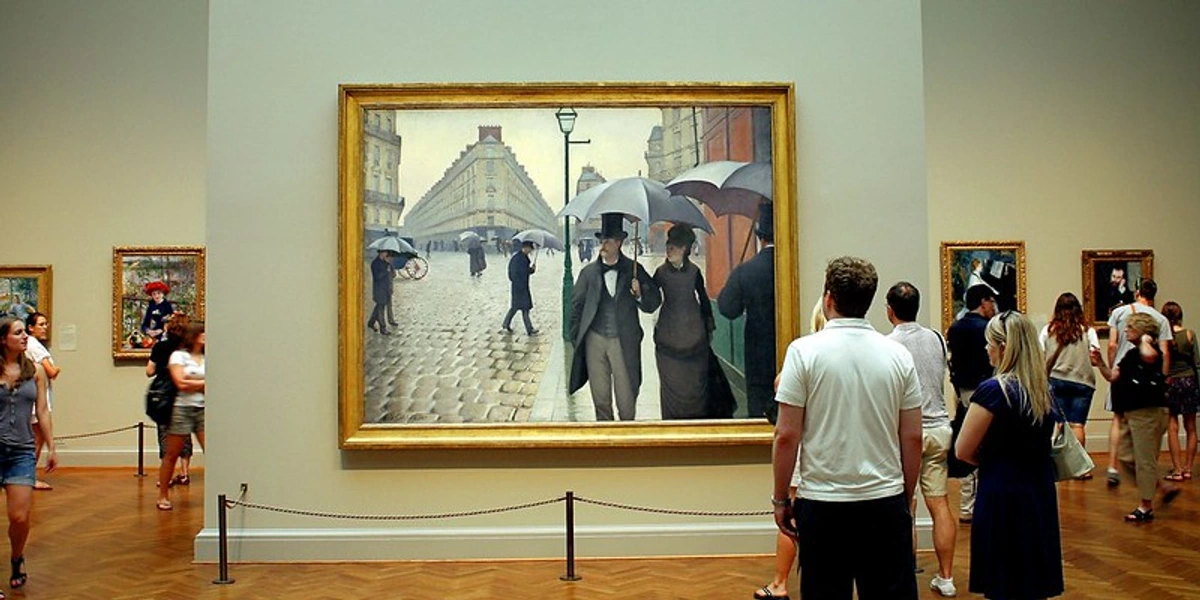
Why Paris? A (Very Personal) Love Letter to its Art Scene
Paris wasn't just present for major art movements; it was often the epicenter, the buzzing studio, the crowded salon where ideas clashed and new visions were born. Think of the Salon system, the official exhibitions that dictated taste for centuries, and the rebellious Impressionists who broke away to show their work independently, capturing fleeting moments in Montmartre and along the Seine. Or the Cubists shattering perspectives in studios buzzing with debate in Montparnasse. Delving into the history of art inevitably leads you through Parisian streets and salons. It's a city where artists didn't just show work; they learned, debated, and pushed boundaries in academies and informal gatherings that fueled the creative fire.
But the story doesn't stop there. Paris was also the birthplace of Surrealism, where artists like Dalí, Magritte, and Breton explored the subconscious mind, often meeting in cafés in Saint-Germain-des-Prés. And after World War II, the city remained a vital hub for abstract art, giving rise to the School of Paris, a diverse group of international artists who found their voice here. This city has a way of drawing creative souls in and shaping them.
This legacy lives on. I remember walking down a quiet street in the 6th arrondissement once, stumbling upon a tiny courtyard, and seeing a glimpse of a sculptor's studio through an open door. The smell of plaster and dust, the half-finished forms... it was a visceral reminder that this city isn't just displaying art history, it's still making it, right here, right now. It's that blend of historical weight and contemporary energy that makes exploring art galleries in Paris so rewarding.
Today, Paris boasts an incredible diversity:
- World-Class Museums: Housing encyclopedic collections spanning centuries.
- Cutting-Edge Contemporary Galleries: Pushing boundaries and showcasing top living artists.
- Specialized Spaces: Dedicated to photography, decorative arts, specific artists, and more.
- Vibrant Neighborhood Clusters: Like Le Marais and Saint-Germain-des-Prés, where you can wander from one gallery to the next.
The Titans: Unmissable Museums (That Aren't Just Galleries)
Okay, technically these are museums, but no guide to "art galleries Paris" is complete without them. They set the context for everything else, housing the masterpieces that define eras. While they can be crowded, experiencing them is essential. Think of them as the foundational chapters before you dive into the current story. They are the anchors, the places that remind you just how deep the roots of Parisian art run. And keep an eye out for their temporary exhibitions – these are often major events that offer unique perspectives and can be highlights of your visit.
Pro Tip: For all major museums, booking your tickets online in advance is highly recommended. It saves you time queuing and often guarantees entry, especially during peak season. Trust me, standing in line when you could be looking at art is a special kind of torture.
1. Musée du Louvre
- What: Former royal palace, now arguably the world's most famous museum. Mona Lisa, Venus de Milo, Winged Victory... you know the drill.
- Why Visit: It's the Louvre. Even a short visit is essential. See the icons, but maybe also explore a less-crowded wing (Islamic Art, Near Eastern Antiquities). The sheer scale of the place still takes my breath away every time I visit; it's a city within a city of art. I once spent a quiet half hour just staring at the intricate details of a Mesopotamian relief – a moment of calm amidst the grandeur. And don't forget to check for major temporary exhibitions – they often require separate tickets or booking ahead, but can be truly spectacular. I once got lost for an hour just trying to find my way back to the exit, which honestly felt like part of the adventure.
- Don't Miss: The sheer scale and history, and maybe finding a quiet corner away from the crowds. The Cour Marly, with its sculptures bathed in natural light, is a personal favorite oasis.
- Location: 1st Arrondissement
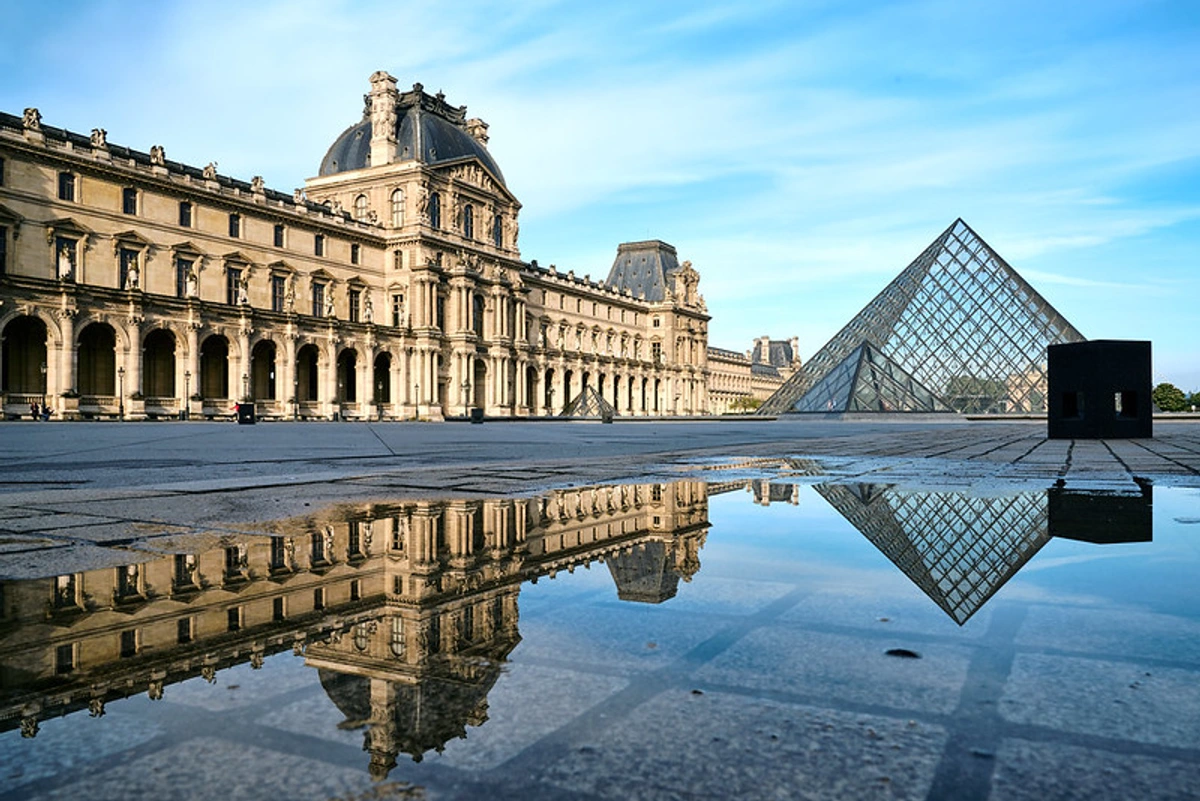
2. Musée d'Orsay
- What: Housed in a stunning former railway station, focusing on art from 1848 to 1914.
- Why Visit: The world's best collection of Impressionist and Post-Impressionist art (Monet, Renoir, Degas, Van Gogh, Cézanne). The building itself is a masterpiece. Finding a quiet corner here, perhaps near a lesser-known Degas sculpture or a sun-drenched Renoir, feels like a small victory and a personal connection to the art. I always make a point to find Caillebotte's The Floor Scrapers – the dynamic composition and light always grab me. It's a much more manageable scale than the Louvre, which I appreciate when my brain starts to feel full.
- Don't Miss: The view through the giant station clock. And take time with the sculptures on the ground floor – they often get overlooked but are fantastic.
- Location: 7th Arrondissement

3. Centre Pompidou
- What: An "inside-out" architectural icon housing the Musée National d'Art Moderne.
- Why Visit: Europe's largest collection of modern and contemporary art (Picasso, Matisse, Kandinsky, Warhol, plus current artists). Also has a great library, cinema, and rooftop views. It's a vibrant, sometimes chaotic space that perfectly reflects the art it houses. I always feel a jolt of energy walking through the contemporary floors, like the art is still arguing with itself in the best way. Seeing a massive, challenging installation piece here always reminds me that art is still evolving, still pushing boundaries.
- Don't Miss: The building itself and the Stravinsky Fountain outside. And definitely take the escalator up for the view – it's one of the best panoramas of Paris.
- Location: 4th Arrondissement (Le Marais)
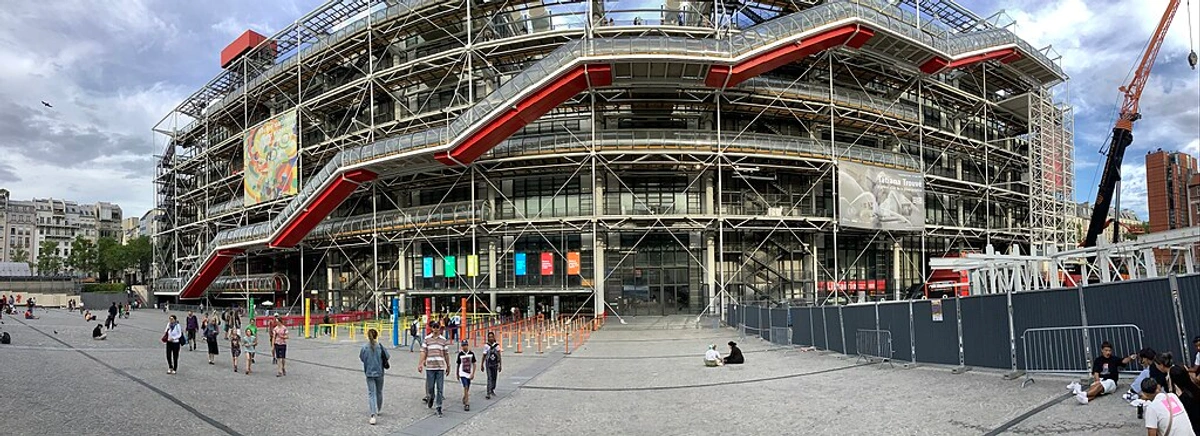
4. Musée Picasso Paris
- What: Housed in the magnificent Hôtel Salé, dedicated to the work of Pablo Picasso.
- Why Visit: An unparalleled collection covering all periods of Picasso's prolific career, including paintings, sculptures, prints, and drawings. Offers deep insight into one of the top artists ever. Seeing the evolution of his work in such a beautiful, intimate setting is truly special. It feels less like a massive museum and more like exploring a very grand artist's home, filled with his restless energy. I'm always drawn to his sketches and preparatory drawings here; they offer such a raw glimpse into his process.
- Don't Miss: The stunning Baroque building contrasting with the art. And look for the lesser-known ceramics and sculptures.
- Location: 3rd Arrondissement (Le Marais)
5. Musée Rodin
- What: Dedicated to the works of sculptor Auguste Rodin, set in the beautiful Hôtel Biron and its gardens.
- Why Visit: See iconic sculptures like "The Thinker" and "The Kiss" in an intimate setting. The sculpture garden is an oasis. It's a place to slow down, breathe, and appreciate the power of form in bronze and marble. I could spend hours just wandering the gardens, finding new angles on familiar works, feeling the quiet strength of the figures. The way the light hits The Thinker at different times of day is something I could watch forever.
- Don't Miss: Strolling through the rose gardens dotted with bronze figures. And don't miss the smaller works inside the mansion.
- Location: 7th Arrondissement
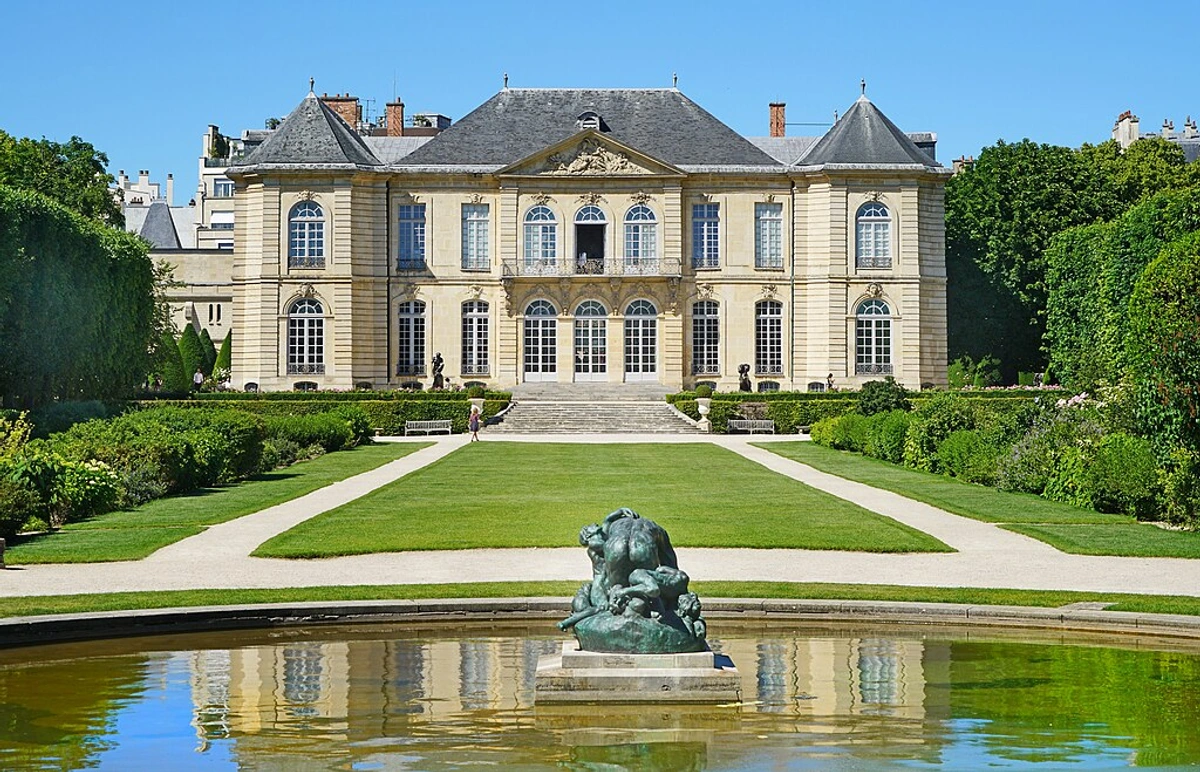
Other Notable Museums
Beyond the big five, Paris offers other museums with unique artistic focuses that are absolutely worth your time. Grouping them by their general focus might help you plan your visits:
For Impressionism Lovers:
- Musée de l'Orangerie: Located in the Tuileries Garden, this museum is famous for housing Monet's monumental Water Lilies murals in two oval rooms. It's an incredibly immersive and peaceful experience, a true highlight for any Impressionism lover. It feels like stepping directly into Monet's world, surrounded by light and color – a truly meditative art experience.
- Musée Marmottan Monet: Tucked away in the 16th arrondissement, this museum holds the world's largest collection of Monet's works, including Impression, soleil levant (the painting that gave Impressionism its name). It also has significant works by Berthe Morisot and other Impressionists. A deeper dive for the dedicated fan, offering a more intimate look at the movement's origins.
For Historical Collections & Decorative Arts:
- Musée Jacquemart-André: A stunning mansion near the Champs-Élysées showcasing the private collection of 19th-century art collectors Édouard André and Nélie Jacquemart. The collection spans Italian Renaissance, Dutch masters, and French 18th-century art, displayed within the opulent rooms of their former home. It offers a fascinating glimpse into the taste and lifestyle of the era, feeling more like visiting a grand private house than a public museum. It's a chance to see how art lived outside the institutional walls.
- Musée des Arts Décoratifs: Located in the Rohan Wing of the Louvre Palace, this museum is dedicated to the decorative arts, fashion, textiles, and advertising. It's a treasure trove of design history, showcasing everything from medieval furniture to contemporary jewelry. As an artist, seeing the evolution of design and craftsmanship here is incredibly inspiring.
For Global Perspectives:
- Musée du Quai Branly - Jacques Chirac: Situated near the Eiffel Tower, this museum is dedicated to the arts and civilizations of Africa, Asia, Oceania, and the Americas. It offers a vital counterpoint to the Western-centric collections of many other Parisian museums, showcasing incredible masks, sculptures, textiles, and more. Exploring its unique architecture and diverse collections is a powerful reminder of the global breadth of artistic expression and the influence of non-Western art on modernism. I was particularly struck by the intricate patterns and vibrant colors in their textile collection; it made me think differently about composition and form in my own work. It's a place that challenges perspectives and expands your understanding of what art can be.
Spotlight on Key Commercial Art Galleries
But Paris's art heart beats just as strongly in its commercial spaces. Beyond the giants, Paris thrives on its commercial galleries. These are the spaces where art is bought and sold, where artists' careers are built, and where you can often see highly curated shows of contemporary work, sometimes even for free. They are the pulse of the current art world, constantly changing and evolving. They are where the conversation about what art is right now is happening, a dynamic contrast to the historical weight of the museums. Stepping into a gallery is like getting a snapshot of the present moment in art.
Here are a few standouts (among many!):
The Global Powerhouses
These are the big names, representing artists whose work you'll see in major museums and at international art fairs. Visiting them is like getting a snapshot of the global contemporary art market at its highest level. Prepare for polished spaces and often, art that makes headlines.
- Galerie Perrotin (Le Marais): Represents major international contemporary stars (like Takashi Murakami, JR). Known for high-impact, often playful exhibitions in a multi-level space. You'll often find large-scale installations, vibrant paintings, and sculptures that demand attention. Perrotin always has this electric buzz; you feel like you're seeing something truly current and exciting. I once saw an exhibition here that made me laugh out loud – a rare and wonderful gallery experience.
- Gagosian (8th Arrondissement & Le Bourget): A global powerhouse. Expect museum-quality shows by blue-chip modern and contemporary artists (Picasso, Warhol, Damien Hirst, Christopher Wool). Their exhibitions often feature painting, sculpture, and photography by some of the most sought-after names. Walking into Gagosian can feel a bit like entering a temple, hushed and reverent, but the scale and quality of the art demand that respect. Note that their 8th Arrondissement space is for typical gallery shows, while the vast Le Bourget space (requiring a trip outside the center, accessible by RER/taxi) is used for monumental installations that need serious room to breathe – they have the space to show truly massive works that wouldn't fit anywhere else in the city.
- Thaddaeus Ropac (Le Marais & Pantin): Another influential gallery with international reach, representing renowned artists like Anselm Kiefer and Georg Baselitz. Their spaces, particularly the one in Pantin (also outside the center, accessible by metro/RER), allow for truly monumental exhibitions, often featuring large paintings, sculptures, and installations that you just can't see elsewhere in the city center. Like Gagosian Le Bourget, the Pantin space is designed to accommodate art on an epic scale.
- Galerie Templon (Le Marais & Rue du Grenier Saint-Lazare): A long-standing gallery founded in 1966, known for launching many artists in France. Represents a mix of established and mid-career international artists, often with a focus on painting and sculpture, sometimes with a conceptual edge. There's a sense of history here, a feeling that you're walking in the footsteps of decades of significant exhibitions.
- Kamel Mennour (Saint-Germain-des-Prés & Le Marais): Known for its sharp eye and representing prominent contemporary artists, including photographers and sculptors, often with conceptually rigorous shows. Mennour's spaces often feel thoughtfully curated, inviting you to slow down and really engage with the ideas behind the work. It's a place for art that makes you think.
- Marian Goodman Gallery (Le Marais): A highly respected international gallery known for its intellectually driven program featuring influential conceptual and minimalist artists. Visiting here often feels like stepping into a space dedicated purely to the conversation between the art and the viewer, often featuring installation, video, and drawing alongside more traditional mediums.
Mid-Tier and Emerging Galleries
Beyond the global giants, Paris has a rich ecosystem of galleries supporting artists at various stages of their careers. These are often where you'll find exciting new work and potentially more accessible price points if you're thinking about how to buy art. They might not have the same international name recognition, but they are vital to the Parisian scene. This is where the real discoveries happen, where you might find a piece that truly speaks to you before the rest of the world catches on.
- What to Expect: These galleries might focus on French artists, specific movements, or emerging talent. The spaces can range from polished white cubes to more raw, experimental venues. Exhibitions change frequently, offering a constant stream of new discoveries. You might find galleries specializing in photography, prints, drawings, or even art from specific historical periods like Art Deco or Surrealism, offering a different kind of treasure hunt. The "accessible price points" here refer to the cost of purchasing art, which can be significantly lower than at the global powerhouses, making them great places to start if you're looking to collect.
- How to Find Them: This is where the real exploration begins! Wander the streets of Le Marais, Saint-Germain, Belleville, and the 13th. Look for gallery signs tucked away in courtyards or on upper floors. Check local art listings online (like Artsy, but also French-specific sites or blogs). Follow galleries you like on Instagram – they often announce openings and feature other artists/galleries. Don't be afraid to just walk in! I've found some of my favorite pieces by simply being curious and opening a door. I remember stumbling into a tiny space in Belleville once and being completely captivated by a series of mixed-media works by an artist I'd never heard of – it felt like finding a secret treasure. Sometimes the most rewarding finds are the ones you stumble upon unexpectedly.
- Why Visit: You might discover the next big thing before anyone else! These spaces often feel more personal and less intimidating than the major galleries. It's a chance to see art that's fresh, experimental, and directly connected to the city's current creative energy. It's also where you might find emerging artists worth collecting.
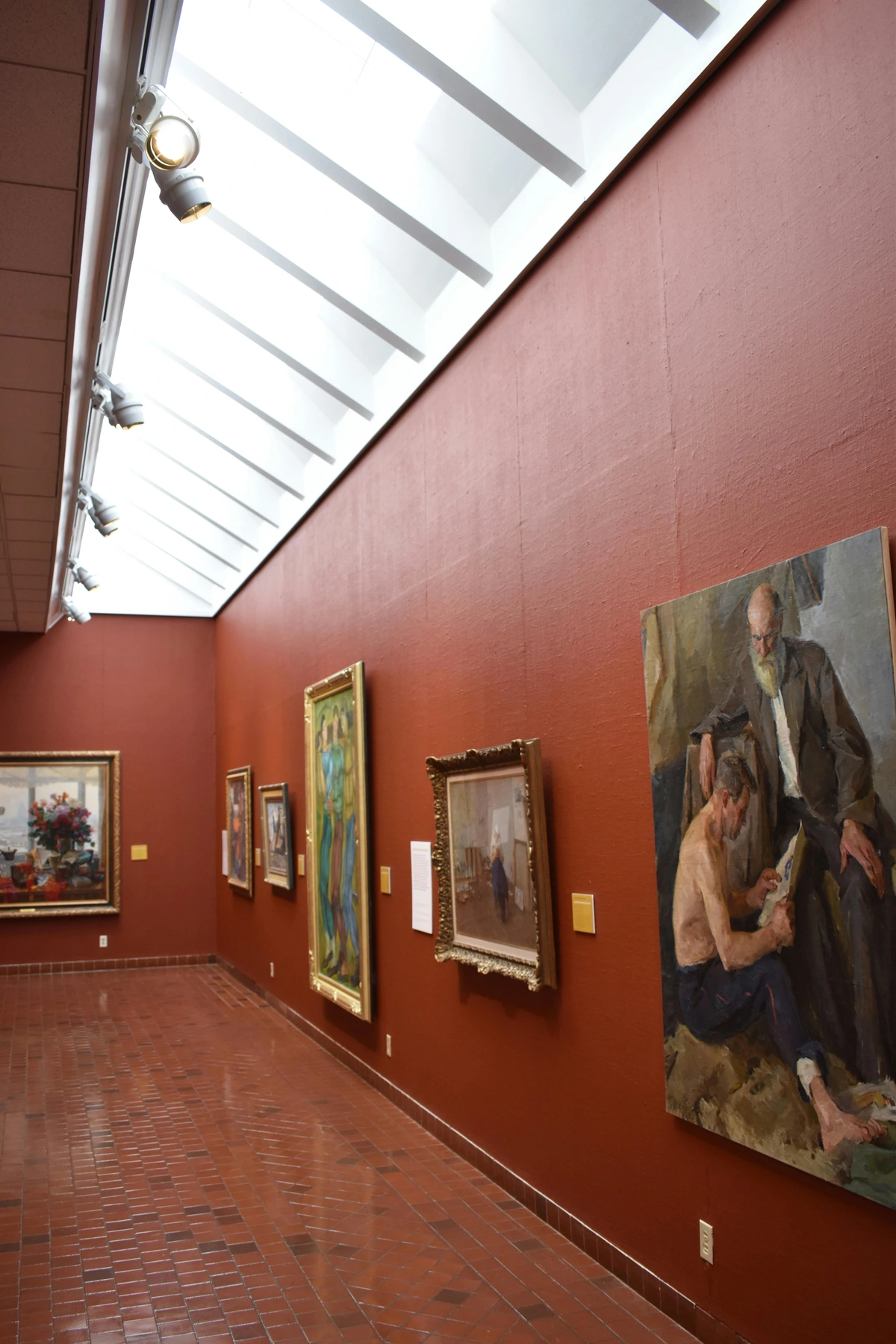
Beyond the White Cube: Other Art Spaces to Explore
To truly understand the depth and breadth of the Parisian art ecosystem, you need to look beyond the traditional museum and commercial gallery model. These other spaces offer different perspectives, scales, and experiences, showing just how multifaceted the art world here is and providing unique opportunities for discovery.
Foundations
These institutions, often privately funded, offer ambitious, often large-scale temporary exhibitions by major international artists, providing a different curatorial perspective than public museums or commercial spaces. They often have a specific focus or patron's vision, leading to truly unique shows. Remember to check their websites for current exhibitions, as these are often temporary and highly anticipated.
- Fondation Louis Vuitton (Bois de Boulogne): Housed in a stunning, sail-like Frank Gehry building, this foundation presents major temporary exhibitions of modern and contemporary art from its collection and others. The architecture alone is worth the trip, and the shows are always high-profile. It feels like a destination, a modern art ship docked in a historic park. Accessible via a dedicated shuttle from Place Charles de Gaulle-Étoile or Bus 244 from Porte Maillot.
- Fondation Cartier pour l'Art Contemporain (14th Arrondissement): Designed by Jean Nouvel, this foundation focuses specifically on contemporary art, commissioning new works and hosting thought-provoking exhibitions. It has a sleek, minimalist feel, letting the art take center stage. I saw an exhibition here once that used sound and light in a way that completely shifted my perception of the space – a reminder that contemporary art can engage all the senses.
- Lafayette Anticipations (Le Marais): This foundation supports and presents contemporary creation across various disciplines – art, fashion, design, performance. It's known for its innovative exhibitions and its commitment to supporting artists in the production phase. The building itself, with its moving floors and adaptable spaces, is a work of art.
Photography Galleries & Institutions
Paris has a deep connection to photography, and several spaces are dedicated to the medium.
- Maison Européenne de la Photographie (MEP) (Le Marais): While technically a foundation, MEP is the key institution for photography in Paris, hosting major exhibitions of historical and contemporary photographers from around the world. It's a must-visit for anyone interested in the medium.
- Specialized Commercial Galleries: Many commercial galleries in areas like Le Marais also specialize in photography, showcasing vintage prints, contemporary photo art, and photojournalism. Keep an eye out for these as you explore the neighborhoods.
Artist-Run Initiatives & Project Spaces
These are the lifeblood of the emerging scene, often tucked away in less central neighborhoods. They offer raw, experimental work and a chance to see artists pushing boundaries outside the commercial pressure. Think pop-up shows, performance art, collaborative projects, and a general sense of creative freedom. Finding one feels like discovering a secret, a direct line to the artists themselves, often before they hit the mainstream gallery circuit. It's less polished, more authentic, and sometimes, profoundly exciting. It's where you see the art world in its rawest, most experimental form.
- How to Discover Them: This requires a bit more effort and serendipity! Keep an eye out for posters on walls in neighborhoods like Belleville, Ménilmontant, and the 13th. Check local art blogs or alternative listings online. Ask artists or gallerists you meet for recommendations. Sometimes, just wandering down a side street and seeing an open door or a sign is the best way. It's like a treasure hunt, and the reward is seeing art that's truly on the edge. I remember walking past a seemingly abandoned storefront in the 13th and seeing a vibrant, temporary installation through the window – it completely stopped me in my tracks.
- What to Expect: Shows might be short-lived, opening hours can be erratic, and the spaces themselves vary wildly – from converted shops to apartments or industrial units. The art can be challenging, surprising, or deeply personal. It's a chance to engage with the creative process in a less formal setting.
Artist Studios (Ateliers)
A truly unique part of the Parisian art scene is the presence of countless artist studios. While not always open to the public, some neighborhoods organize "Portes Ouvertes des Ateliers d'Artistes" (Open Artist Studios) events, usually annually. This is an incredible opportunity to step inside the working spaces of artists, see works in progress, and even chat with the creators themselves. It offers a direct connection to the making of art that you don't get in a gallery or museum.

Specialized Galleries and Other Facets of the Scene
Paris's art world is incredibly deep and varied. Beyond the major museums and contemporary spaces, you can find galleries and institutions dedicated to specific niches.
Design and Applied Arts
While the Musée des Arts Décoratifs covers historical design, Paris also has galleries specializing in contemporary design objects, furniture, and applied arts. These spaces blur the lines between art, craft, and function.
- What to Expect: Exhibitions of unique furniture pieces, ceramics, textiles, jewelry, and other objects where artistic vision meets functional form. These can be fascinating places to explore the intersection of art and everyday life.
- How to Find Them: Look in areas known for design boutiques, like parts of Le Marais and Saint-Germain. Specialized design fairs also happen throughout the year.
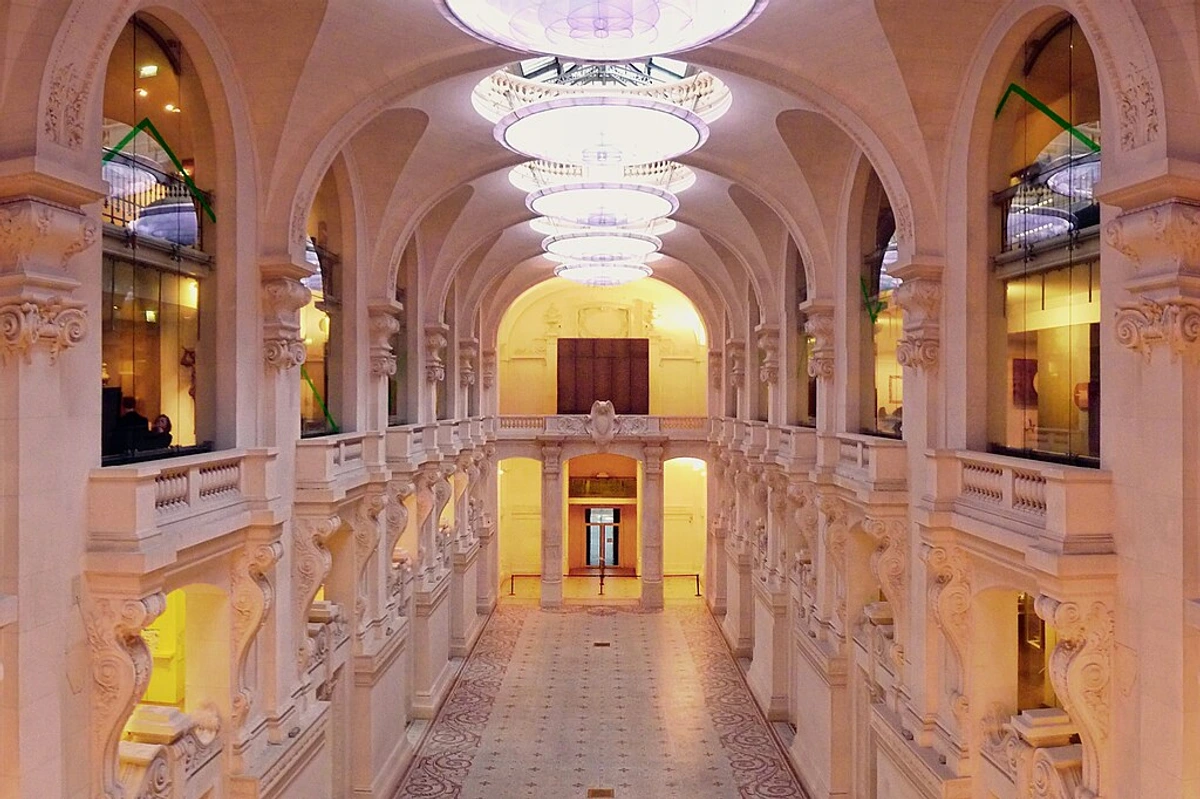
Historical Periods and Genres
Beyond the Louvre and Orsay, you can find galleries specializing in specific historical periods or genres, offering a chance to see and even acquire works from different eras. This is where you can find everything from ancient artifacts to 20th-century prints.
- Old Masters and Antiquities: Scattered throughout the city, particularly on the Left Bank, are galleries dealing in older paintings, drawings, sculptures, and antiquities. These are often quiet, elegant spaces where you can get up close to history.
- Prints and Drawings: Galleries dedicated to works on paper offer a different kind of intimacy. You can find everything from Old Master etchings to contemporary lithographs. It's a great way to explore collecting art at potentially more accessible price points.
- Art Deco and 20th Century: Look for galleries specializing in the decorative arts and fine art of the early to mid-20th century, particularly Art Deco, Surrealism, and post-war movements. These spaces offer a glimpse into specific, influential periods of Parisian art history.
- Tribal and Non-Western Art: Paris has a long history of engagement with art from Africa, Oceania, and the Americas. Galleries specializing in tribal art offer a glimpse into different aesthetic traditions and cultural histories, complementing the collections found in institutions like the Musée du Quai Branly.
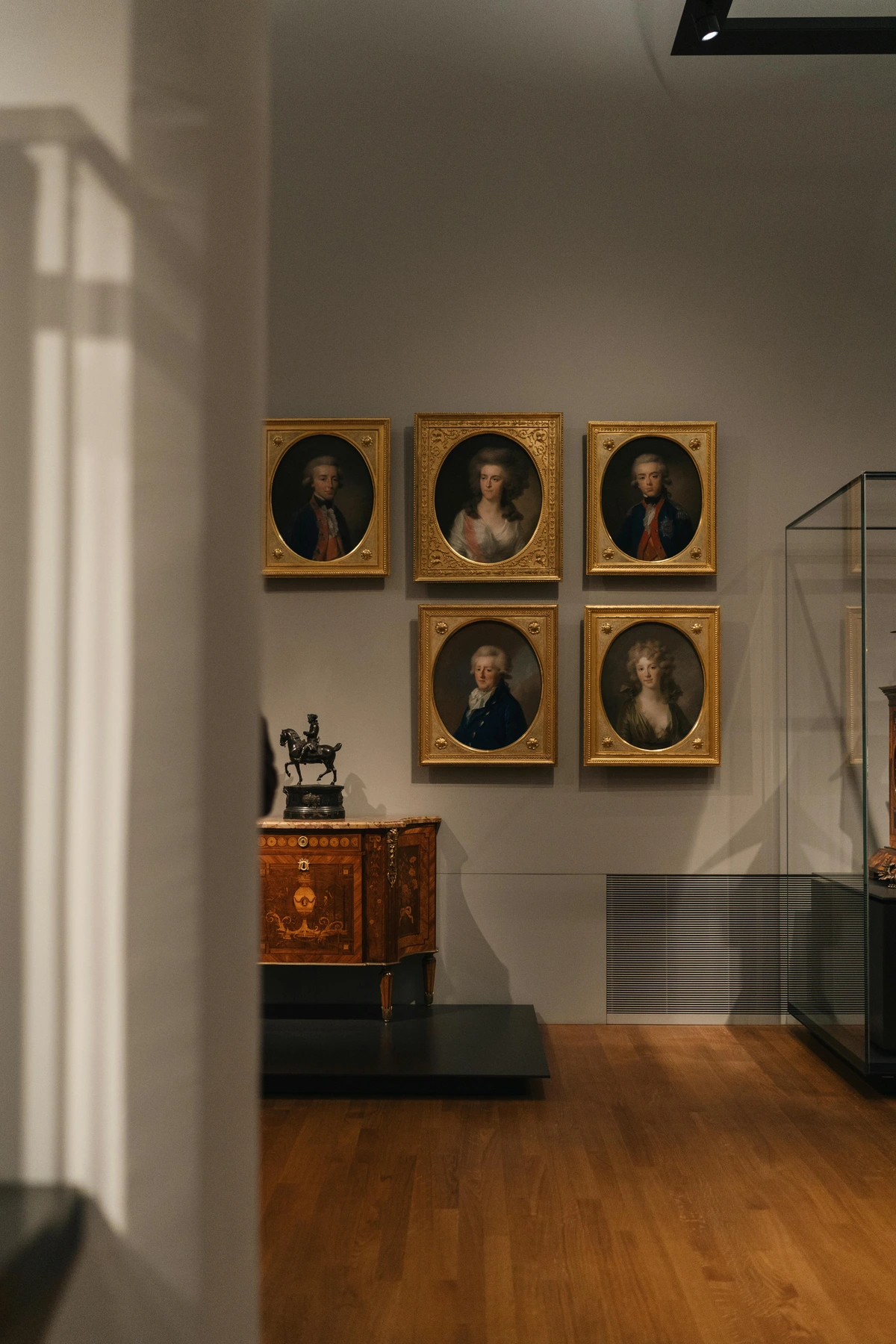
Auction Houses
While primarily places of commerce, major auction houses like Christie's and Sotheby's have significant presences in Paris and often hold public viewing days before major sales. This is a fantastic, free way to see high-value art across various categories, from Old Masters to contemporary, before it disappears into private collections. It's a peek into the art market at its highest level.
- What to Expect: Polished, temporary exhibitions of works about to go to auction. You can see pieces that might otherwise only be accessible to collectors. It's a different kind of viewing experience, often with detailed catalogues available.
- How to Visit: Check their websites for exhibition schedules. Viewing days are usually open to the public with no appointment needed.
Navigating the Labyrinth: Where to Find What
Paris is organized into arrondissements (districts), and knowing the general vibe of each can help focus your search. Each one offers a slightly different flavor of the Parisian art experience. Think of it as choosing your adventure level, now that you know what kinds of adventures are available.
- Le Marais (3rd & 4th): Historically Jewish Quarter, now a buzzing hub for contemporary art galleries, fashion boutiques, and charming cafés. This is where I always seem to stumble upon something unexpected, a hidden gallery entrance or a striking piece visible from the street. Expect established names alongside emerging talent, foundations like Lafayette Anticipations, and plenty of smaller spaces. Home to Musée Picasso and near Centre Pompidou. It's also a great area to find galleries specializing in photography.
- Saint-Germain-des-Prés (6th): The traditional intellectual and artistic heartland. This area feels steeped in history the moment you step onto the street, with ghosts of writers and artists in every café. Still home to legendary galleries, often focusing on post-war and modern art, alongside high-end antique dealers and iconic cafés like Les Deux Magots. You'll find some contemporary galleries here too, often with a more established feel. Look here for galleries specializing in prints and drawings as well.
- Belleville (20th): A more edgy, up-and-coming area known for its vibrant street art scene and numerous artist studios and smaller, independent galleries. It feels raw and authentic, a place for spotting emerging artists worth collecting before they hit the mainstream. I once saw a mural here that felt like the city itself was shouting – in the best possible way. The streets themselves are a gallery here.
- 13th Arrondissement: While further out, this district has become a major canvas for large-scale street art murals, particularly around Boulevard Vincent Auriol. It's an open-air gallery experience that's completely different from the traditional white cube. Definitely worth the metro ride if you love street art and want to see art on a massive scale. The scale of the murals here is truly breathtaking, featuring works by international and local artists that transform entire buildings.
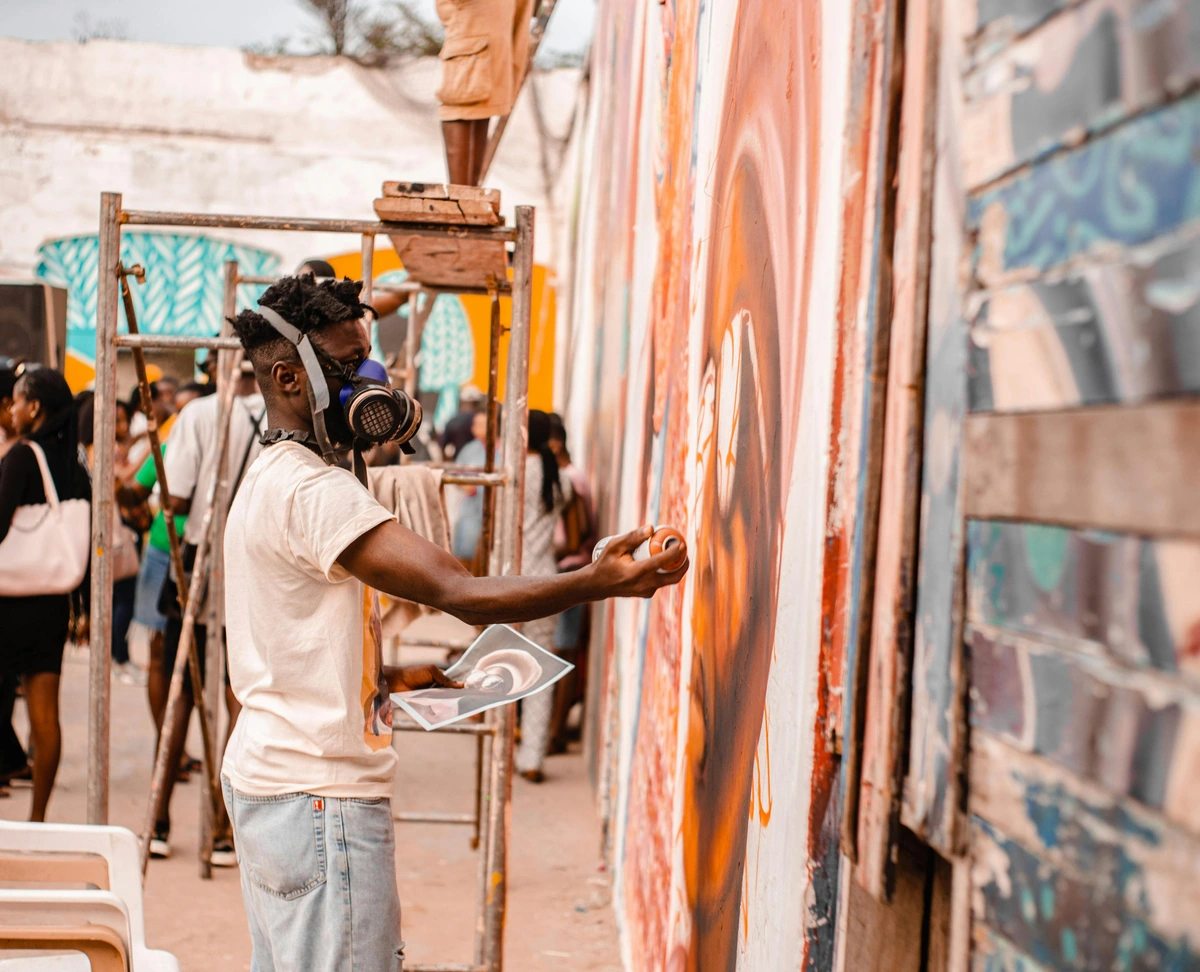
- 8th Arrondissement: Near the Champs-Élysées, you'll find several blue-chip international galleries representing major global artists (like Gagosian's main space). It's a grander, more polished gallery-going experience. Think hushed tones and serious art.
- Triangle d'Or (Golden Triangle - parts of 8th, 16th, 17th): Primarily luxury shopping, but also home to major auction houses and some very high-end galleries. Think of it as the high-fashion equivalent of the art world – impressive, but maybe not where you'll find a quirky new print.
- 19th Arrondissement & Pantin: Areas like Pantin, just northeast of the city center (easily accessible by metro/RER), are home to some of the larger gallery spaces and foundations, like Thaddaeus Ropac and some project spaces. These industrial-scale spaces allow for monumental installations and exhibitions that simply wouldn't fit elsewhere. It feels like stepping into a different, more expansive art world.
So, pick a neighborhood that calls to you, or one that specializes in the kind of art you're curious about, and let the exploration begin!
Making the Most of Your Gallery Hopping
A few tips to enhance your experience and avoid common pitfalls (speaking from experience here – I've made most of them!):
- Check Opening Hours & Dates: This is crucial! Many smaller galleries close for lunch, are closed on Sundays/Mondays, or have specific hours. Always check online before visiting. Major museums often have late openings one night a week. And as mentioned, gallery exhibitions change frequently, often every 6-8 weeks, so checking their website for the current exhibition dates before you visit is a must! Don't make my mistake and show up just as they're de-installing.
- Consider Public Transport: Paris has an excellent metro and bus system. Use it! For galleries outside the immediate center, like those in Pantin or Le Bourget (Gagosian, Ropac) or Fondation Louis Vuitton (bus 244 from Porte Maillot), planning your route via public transport is essential. It's often easier and cheaper than taxis. Plus, you get to feel like a local navigating the city.
- Vernissages (Openings): Gallery openings are often free and open to the public (usually evenings). It's a chance to see new work, meet people (including sometimes the artist!), and enjoy a glass of (usually free) wine. Can be crowded but have a great atmosphere. Check gallery websites or newsletters for dates. It's a peek into the social side of the art world.
- Look for Events: Beyond openings, check gallery and foundation websites for artist talks, book signings, performances, or other events that can offer deeper insight and enrich your visit. Temporary exhibitions at museums and foundations are often major events and worth seeking out.
- Annual Events: Keep an eye out for major art fairs like Paris+ par Art Basel (formerly FIAC in October), but also city-wide events like Nuit Blanche (an all-night art festival in October) or various gallery weekends throughout the year. These offer unique viewing opportunities and a real buzz.
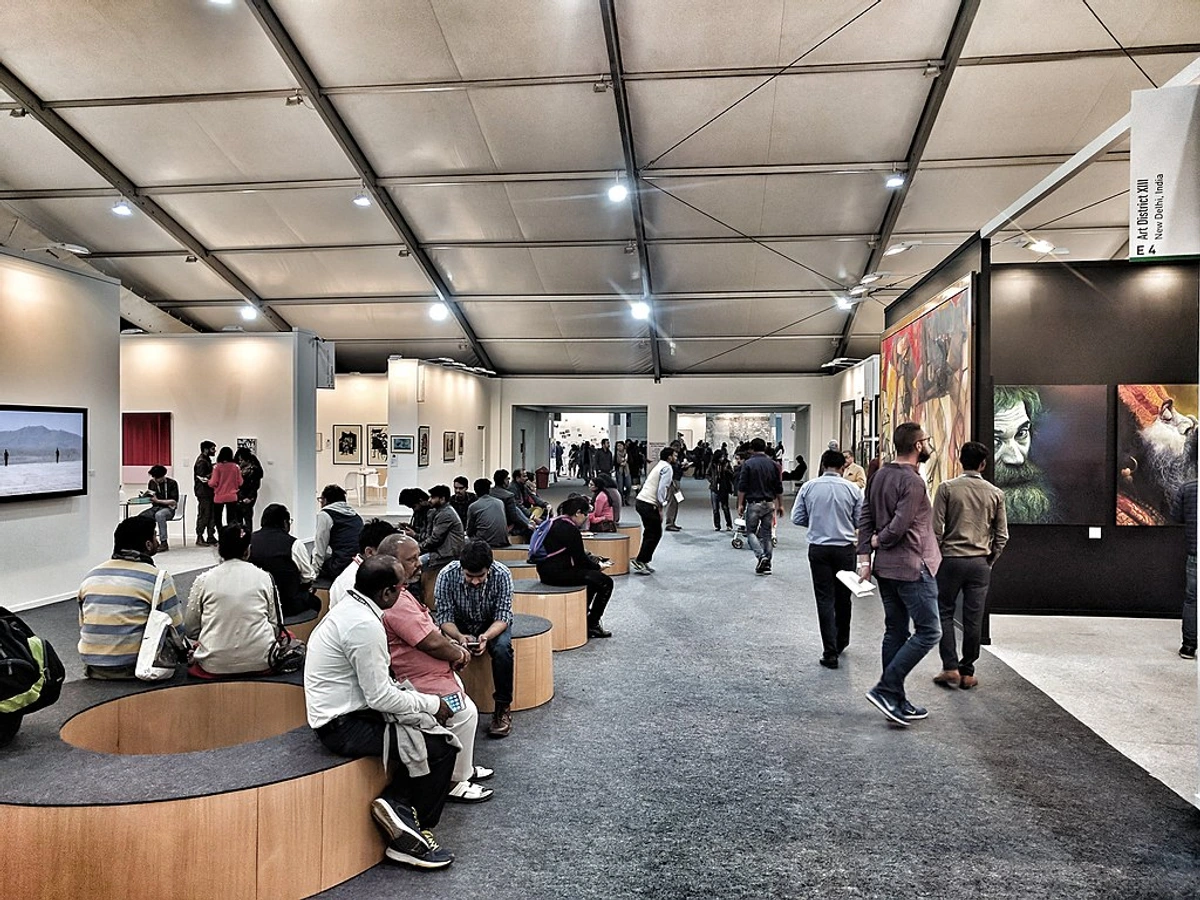
- Don't Be Intimidated: Especially in high-end contemporary galleries, it can sometimes feel a bit... cool, or even sterile. Don't let it put you off. You have every right to be there and look. The staff are usually knowledgeable and happy to answer questions about the artist or the work, even if you're not planning to buy. Just be polite! I once asked a question about a piece I genuinely didn't understand, and the gallerist gave me a fascinating explanation that completely changed my perspective. It's worth asking! And remember, everyone starts somewhere; nobody is born knowing all the art jargon.
- Gallery Etiquette: A quick note on photos – always ask before taking pictures, especially in commercial galleries. Some allow it freely, others have restrictions, and some prohibit it entirely. Respect their policy. And please, for the love of art (and the gallery's insurance policy), do not touch the artwork unless explicitly invited to do so (which is rare!). Keep a safe distance – those white walls are there for a reason.
- Check Accessibility: If accessibility is a concern, it's wise to check the website or call ahead, especially for smaller galleries in older buildings. Paris is an old city, and not all spaces are easily navigable for everyone. It's always better to check in advance than be disappointed upon arrival.
- Take a Break: Don't underestimate the value of a good coffee break or a moment to sit and reflect. Many museums and larger galleries have cafes or even restaurants. Stopping for a drink or a snack, or browsing the museum bookstore, can be a lovely way to process what you've seen and recharge before the next stop. I've had some great conversations about art (and life) over a croissant and coffee in a museum cafe.
- More Resources: Beyond L'Officiel des Galeries & Musées and Artsy, consider signing up for newsletters from galleries you're interested in, checking local art blogs (a quick Google search for "Paris art blog" can yield results), or even using Instagram hashtags for specific neighborhoods (#maraisgalleries, #bellevilleart) to see what's currently showing. Don't underestimate the power of a good local blog or social media feed for finding those truly hidden gems.
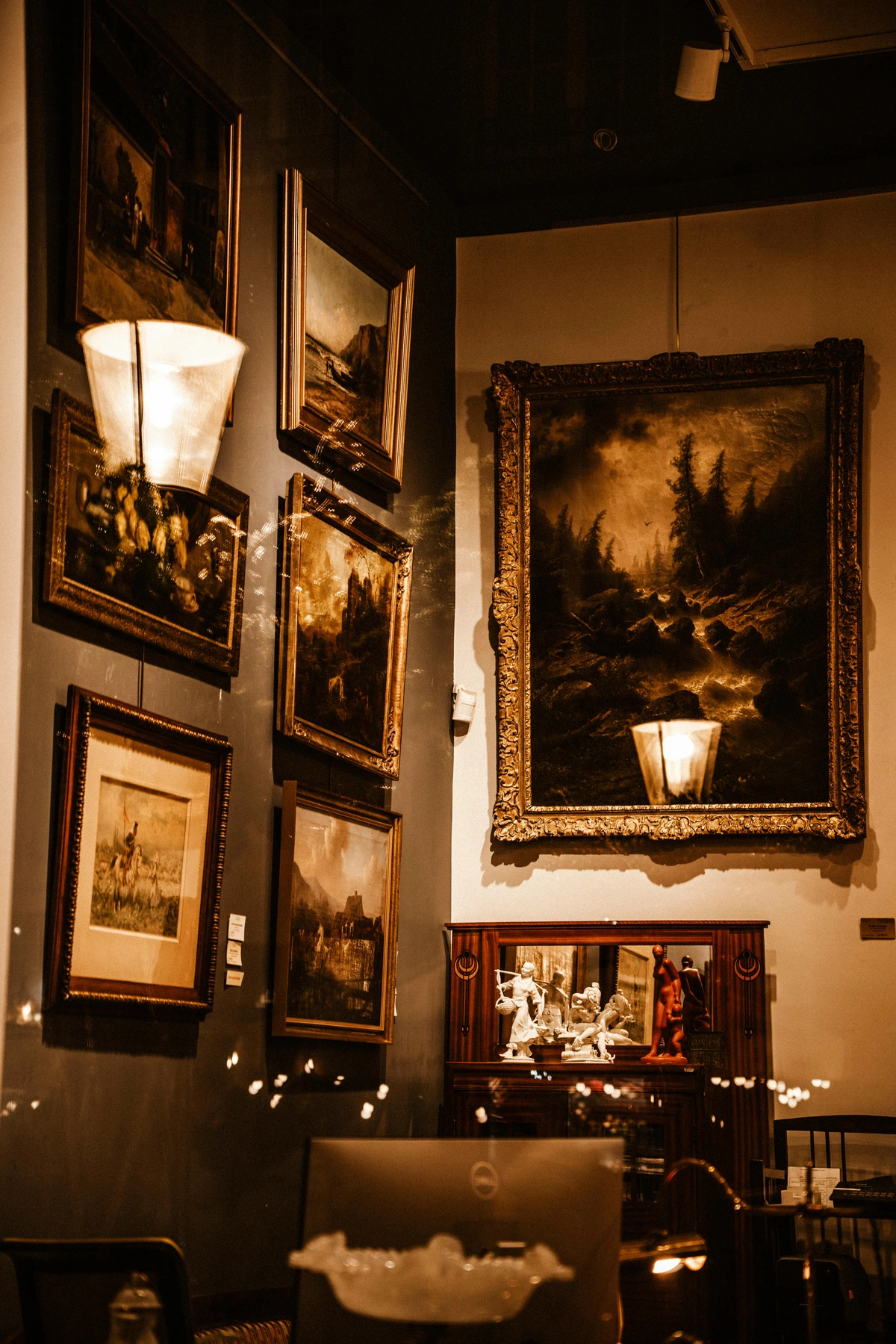
Connecting with Art: It's Personal
Sometimes you'll walk into a gallery bursting with critically acclaimed art, and... nothing. It just doesn't speak to you. Other times, a small, unassuming piece in a corner somewhere will completely captivate you. That's the magic (and sometimes frustration) of art. It's okay if a famous piece leaves you cold, and it's wonderful if a lesser-known artist's work stops you in your tracks. As an artist myself, I know that connection is everything. It's not about ticking boxes or seeing what you're 'supposed' to like; it's about finding what resonates with your eye, your feelings, your own creative spirit. It's about that gut feeling, that spark that makes you pause and look closer.
Don't feel pressured to like what you're "supposed" to like. Pay attention to what resonates with your eye and your feelings. Maybe it's the color, the subject matter, the technique, or just an indefinable vibe. Discovering your personal art style and taste is a journey, not a test. What kind of art makes you feel something? What colors draw you in? What subjects intrigue you? Paris is the perfect place to explore these questions. It's a city that has inspired countless artists throughout history, and it can inspire you too. My own artist's journey has been deeply influenced by cities like Paris, seeing how art evolves and lives in different spaces.
And if you find something you truly love in a commercial gallery? Well, exploring how to buy art might be your next adventure. Many galleries offer works at different price points, and you might even find unique contemporary pieces, perhaps like some available online, that speak to you directly. Who knows, maybe you'll find a piece that reminds you of your Parisian journey, a tangible memory of the magic you found.
FAQ: Quick Answers on Paris Art Galleries
- Q: What's the best area in Paris for art galleries?
- A: Le Marais (3rd/4th) has the highest concentration, especially for contemporary art. Saint-Germain-des-Prés (6th) is classic for modern and post-war. Belleville (20th) and the 13th Arrondissement are great for emerging artists and street art. But honestly? The "best" area is the one where you find art that speaks to you.
- Q: Are art galleries in Paris free to enter?
- A: Most commercial art galleries are free to enter. Major museums (Louvre, Orsay, Pompidou, etc.) charge admission, though some offer free entry on certain days/evenings (like the first Sunday of the month - check specific museum policies as this can change). Foundations like Fondation Louis Vuitton usually charge admission for their exhibitions.
- Q: What's the difference between a museum and a gallery in Paris?
- A: Generally, museums (like the Louvre or Orsay) have large, permanent collections owned by the institution or state, often focused on historical preservation and education, and usually charge entry. Galleries (like Perrotin or Templon) primarily exhibit and sell works by artists they represent, often focusing on contemporary art, and are usually free to enter. Foundations often sit somewhere in between, hosting large temporary exhibitions with a specific focus. The lines can blur, especially with artist-run spaces.
- Q: When is the best time to visit galleries?
- A: Weekday afternoons (Tuesday-Saturday) are often less crowded than weekends. September (la Rentrée) is a major time for new exhibition openings after the August break, making it a very exciting time. Major art fairs like Paris+ par Art Basel (October) also bring a lot of energy and special shows. But really, any time you can go is the best time! Just be sure to check specific opening hours and exhibition dates online.
- Q: How do I find galleries showing a specific type of art (e.g., photography, sculpture)?
- A: Start by researching galleries known for that medium (like MEP for photography, though it's a foundation). Websites like Artsy, gallery directories, and local art publications often allow you to filter by medium or style. Exploring neighborhoods known for certain types of art (like the 13th for street art) is also a great strategy. Don't be afraid to ask gallery staff for recommendations – they often know who is showing similar work nearby.
- Q: Are galleries accessible?
- A: Accessibility varies greatly, especially in older buildings. Always check the gallery or museum's website or call ahead if accessibility is a concern. (See the "Making the Most" section for more on this).
- Q: Can I ask gallery staff questions?
- A: Absolutely! They are there to help and are usually very knowledgeable about the artist and the work. Don't be shy, even if you're just curious and not looking to buy. Asking questions is part of the discovery process!
- Q: Where can I find resources for current exhibitions beyond Artsy?
- A: Look for local French art magazines (online or print), check websites like L'Officiel des Galeries & Musées, consult local art blogs covering the Parisian scene, or use social media hashtags for specific neighborhoods (#maraisgalleries, #bellevilleart) to see what's currently showing. Gallery newsletters are also a great source.
Go Forth and Explore!
Paris's art scene is a vast, ever-changing landscape. This guide is just a starting point, an invitation to dive in. The real joy comes from wandering the streets, stepping through doorways, and letting the art of Paris surprise and engage you. It's a personal journey of discovery, piece by piece, street by street. It's about finding those moments that stop you in your tracks, whether it's a famous masterpiece or a piece by an artist you've never heard of.
Whether you spend an hour in the Louvre or discover your new favorite artist in a tiny gallery in Belleville, soak it in. Forget feeling overwhelmed; embrace the abundance and the possibility of connection. The best art galleries in Paris aren't just buildings on a map; they're experiences waiting to unfold for you. They are conversations waiting to happen, both with the art and with yourself. Enjoy the journey, and see what art finds you. And who knows, maybe you'll be so inspired you'll want to visit my own museum in Den Bosch someday!





